MARIANI’S
April
9, 2006
NEWSLETTER
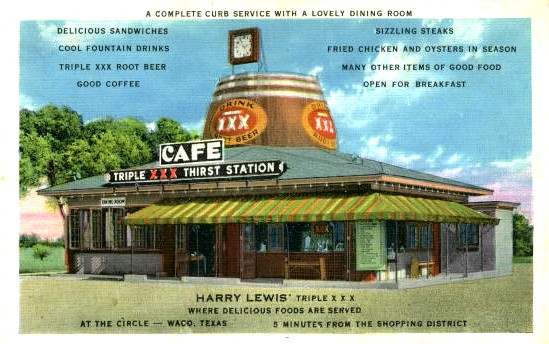
UPDATE: To
go to my web site, in which I will update food
&
travel information and help link readers to other first-rate travel
& food sites, click on: home page
ACCESS TO
ARCHIVE: Readers may now access
an
Archive of all past newsletters--each annotated--dating back to July,
2003, by simply clicking on www.johnmariani.com/archive
.
NEW
FEATURE! You may now subscribe anyone you wish
to this newsletter by
clicking here.
In
This Issue
Stupid Restaurants' Tricks by John Mariani
NEW YORK CORNER: GILT by John Mariani
NOTES FROM THE WINE CELLAR: KOSHER WINES FOR PASSOVER by John Mariani
QUICK BYTES
~~~~~~~~~~~~~~~~~~~~~~~~~~~~~~~~~~~~~~~
by John Mariani
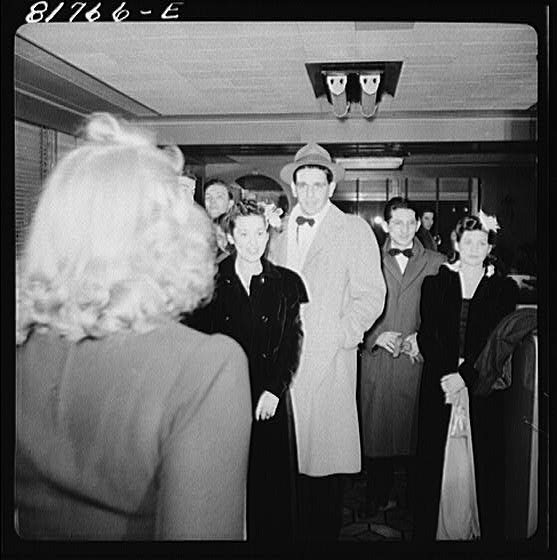 The
way to a man's heart is actually through his pet peeves. Eliminate his
personal
discomforts and you'll make him deliriously happy. I've got plenty of
pet peeves
about dining out--loud restaurants, tables to close together, inept
waiters,
cheap wineglasses and a lot more--some obvious, some subjective.
The
way to a man's heart is actually through his pet peeves. Eliminate his
personal
discomforts and you'll make him deliriously happy. I've got plenty of
pet peeves
about dining out--loud restaurants, tables to close together, inept
waiters,
cheap wineglasses and a lot more--some obvious, some subjective.But then there are other practices of chefs and restaurateurs I believe show a complete misunderstanding of the fine dining experience. They are what I call "Stupid Restaurant Tricks"--some actually assumed to be the height of crème de la crème dining when in fact they are misguided, pretentious attempts to appear "classy." I can't imagine where they get some of these ridiculous ideas from, but I wish they'd disappear for good. Here are some of those I find--objectively--barbaric.
CAVIAR CORRUPTUS
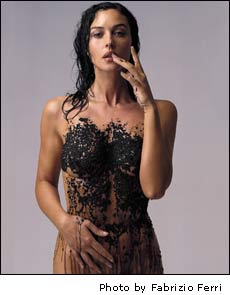
As any Russian will tell you, caviar should be eaten in its pristine, untouched, right-out-of-the-tin glory and sipped off a mother of pearl spoon without being sullied by egg or onion or anything else. And when you cook with it, or simply plop it on top of a warm dish or in a sauce, it not only decomposes the caviar's textural virtues but makes everything it touches turn fishy. And fishy, especially on fish, is not a good thing.
ICY AROUND THE MIDDLE OF THE MEAL
Who in his right mind craves an icy, sweet sorbet before his main course? This relic of an era in France when a dinner could contain twelve or fifty courses was actually a replacement for a shot of spirits, called le trou normande, once served in the middle of dinner to somehow make room for what was to follow. In this century the idea is not just archaic but ridiculous: By what contorted argument is a sweet sorbet laced with liqueur considered a "palate cleanser" before the main course? It does nothing of the sort; instead, it tends to shut down the palate, and it's sheer pretension to keep this silly ritual going.
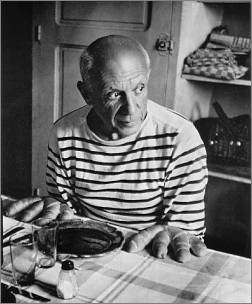
YES WE HAVE NO BREAD
Have you noticed recently more and more restaurants in this country not serving bread or rolls before you order an appetizer? And why do you think that is? Could it be because the restaurateur doesn't want you to cut your appetite and not order an appetizer? Not very hospitable. How cheap can you get?

CLANG, CLANG CLANG WENT THE COVERS
Whoever it was who first told his waiters to assemble around a table and simultaneously lift those silver domes and clang them in guests' ears should be condemned to a new circle of hell inside a tolling silver bell for all eternity.
DON'T POINT THAT THING AT ME!

The kind of restaurant that would decant every bottle of wine probably also brandishes the biggest pepper mill obtainable. In some restaurants this is called the "Rubirosa," named after a 1950s playboy named Porfirio Rubirosa (right) known for more than just the size of his ego. To bring these logs to the table is intrusive and absurd.

NOW RECITE THEM BACKWARDS WHILE STANDING ON YOUR HEAD
No one I have ever met enjoys the recitation of numerous specials by a waiter who runs through them with the enthusiasm of a clerk at the Motor Vehicles Bureau. You can't remember everything he says, you have no time to digest his spiel, and it would be so much easier if the specials were printed on a card.
I STILL SAY IT'S DUST
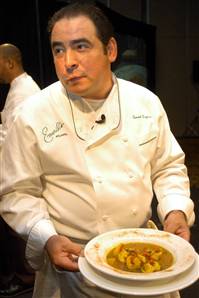
The fashion for sprinkling the edges of plates with some kind of spice, sugar or chocolate is as messy and unappealing a conceit as I can imagine. In good restaurants there is a person called an "expediter"--very often the chef himself--who inspects every dish about to be sent out to make sure the plate's edge is clean as a whistle. But in dopey restaurants they have a guy who sprinkles this soot on the very place you don't want it to be--proximate to one's cuffs and clothes. Bam!
THIS IS
In
THE CHINTZY CHEESE MAN

One thing the French do very, very well is to present and serve a cheese course with efficient grace. A cart of maybe 20 cheeses in perfect, room temperature condition is wheeled to your table, you choose which ones you want, and the waiter slices off a generous wedge for you to eat. In this country, however, if there is a cheese cart, one must listen to a description of every cheese ad nauseam ("This is a ewe's milk cheese from a town south of Lyons where all the sheep are fed dandelion leaves three times a week and hazelnuts every other Sunday, giving it a tangy, nutty flavor, blah, blah, blah."), then try to decide among them, at which point the waiter gives you the skimpiest of slivers and a bunch of unnecessary grapes. Or if there is no cheese cart, the cheese course is a plate of two or three teeny-weeny morsels of cheese that could all fit on a single Ritz Cracker and still leave room for Cheez Wiz.
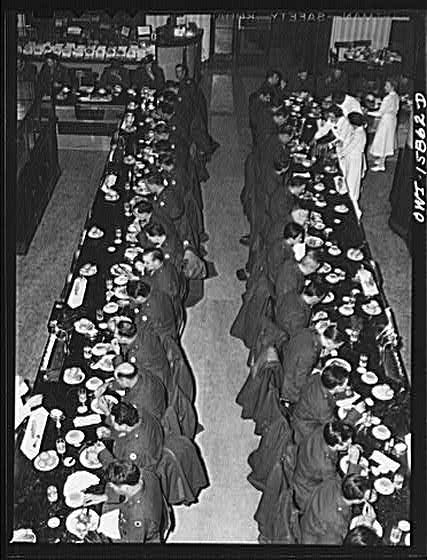
TWO HOURS, TWO HUNDRED DOLLARS
I well realize that table-turning is requisite to running a profitable restaurant in America, but the odious practice of informing a prospective guest that "We shall need the table by 9 P.M." strikes me as arrogant at its greediest. A civilized diner does not linger hour after hour (American restaurateurs use a formula that a party of two needs two hours to finish their meal, a party of four two-and-a-half), and good manners suggests that you should vacate a table in a reasonable amount of time. But to have one's evening at a restaurant feel like a doctor's appointment is to destroy any concept of gracious dining.
THE BOTTLED WATER TRICK

"Would you like still or sparkling water for the table?" asks the waiter. You opt for one or the other. Your party drinks the water. The bottle is replaced. The bill comes. You have been dunked in that water to the tune of $18. Even if you did expect to pay for the first bottle, the replenishing the table with a second, un-asked for bottle is a royal gouge. I shudder in anticipation of the day when they offer me "iodized, kosher or sea salt?"

LET THERE BE LIGHT
"Ninety-five percent of romance is good lighting," Noel Coward once said, and he meant light by which you can see the person you're dining with, read the menu you're ordering from, and appreciate the lovely food preparations placed in front of you. Dark restaurants are not romantic; they are merely dark and funereal. Light adds gaiety, buoyancy, and the ability to see who's next through the door.
NEW YORK CORNER
by John Mariani
GILT
212-891-8100
www.giltnewyork.com
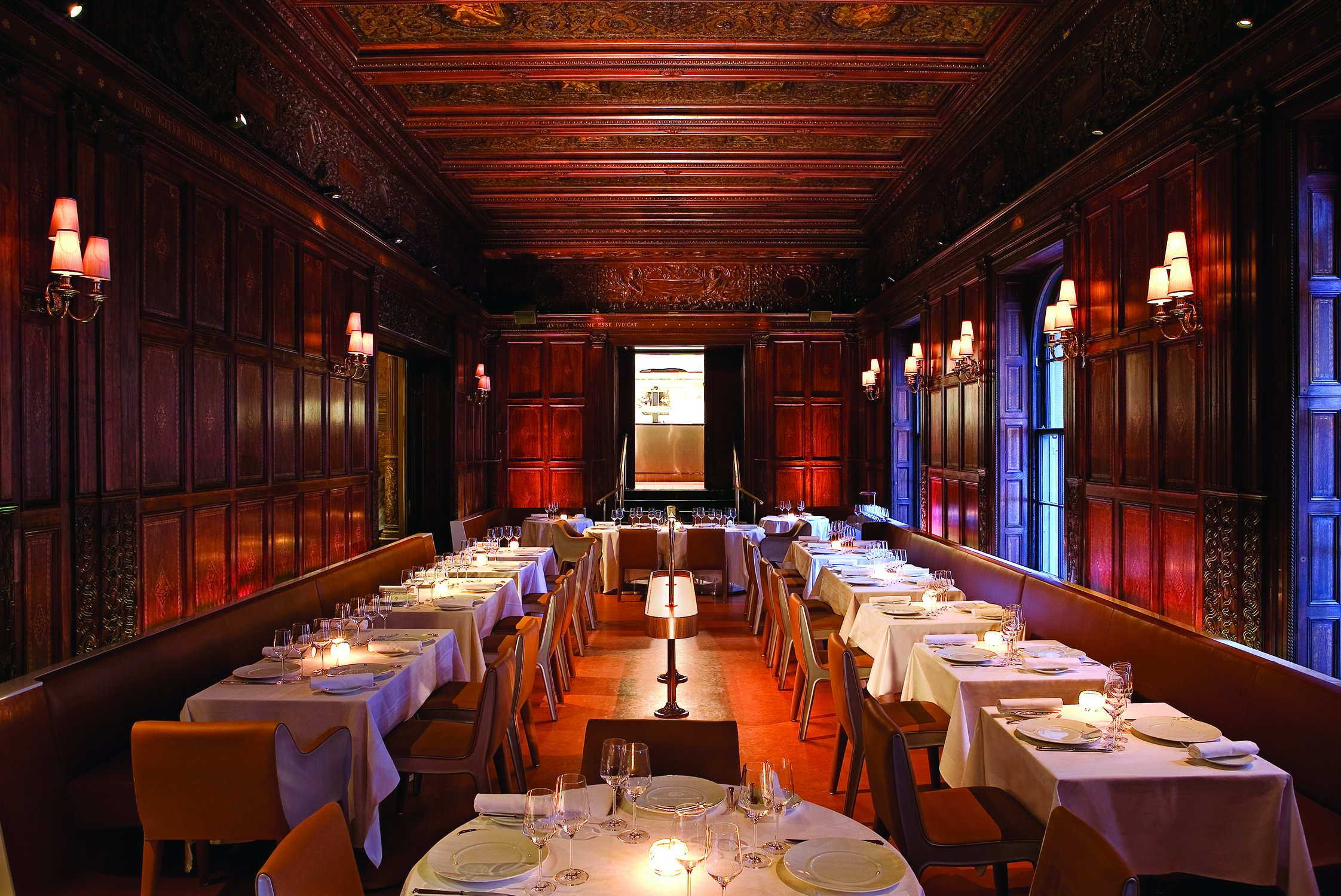 Hoteliers
are not usually risk takers when it comes to their dining rooms.
Conservative rather than daring is the rule, with the occasional leap
of faith that a high profile chef can command enough attention to draw
the hotel guests, the tourists, and the locals. So The New York
Palace's
hiring (with two London investors) of controversial young chef Paul
Liebrandt, 29, has tremendous risks, especially after the dining room
space had been vacated 16 months ago by the famous Le Cirque 2000 (now
set to re-open uptown in May).
Hoteliers
are not usually risk takers when it comes to their dining rooms.
Conservative rather than daring is the rule, with the occasional leap
of faith that a high profile chef can command enough attention to draw
the hotel guests, the tourists, and the locals. So The New York
Palace's
hiring (with two London investors) of controversial young chef Paul
Liebrandt, 29, has tremendous risks, especially after the dining room
space had been vacated 16 months ago by the famous Le Cirque 2000 (now
set to re-open uptown in May).The sacrosanct landmark interiors of the magnificent premises, known as the Villard Mansion, dating to 1852, prevented both Le Cirque and current management from putting so much as a single carpet tack in the room, so its basic lineaments of glorious wood-paneling, marble fireplace (below) and parquet floors have merely been appended with rolled-in decor, which now includes 52 seats, a purple hood over the bar (right), and very odd burnt orange banquettes. There is still an open kitchen peeking from beyond a staircase, but a former second dining room is now used for breakfast and is not part of Gilt. But to get to these rooms you must enter an angst-inducing entrance way, a room with the low gray light of a mausoleum and the tenor of a secret cell where Skull and Bones might meet for inductions and hazings.
Liebrandt (who has his own official website, click) is nothing if not highly creative, which is a far better thing than when, a few years ago, he was hyper-creative, falling in with those young chefs who believe others' cuisine is outdated and boring and that food and dining must be transformed to, in his words, "evoke emotional responses" in people. (Funny, I always thought "Ooh!" "Ah!" and "Yech!" were emotional responses to what people ate.) Liebrandt flared brightly at Atlas on Central Park South after working with far more traditional chefs in like Marco Pierre White in London and Raymond Blanc at Le Manoir aux Quat Saisans in Milton, then with the highly inventive Pierre Gagnaire in Paris and the artfully intense David Bouley in NYC.
Atlas set critics at odds--with some, including then NY Times reviewer William Grimes, raving about Liebrandt's fantastic forays into dishes designed to stir controversy, like eel with crystallized violets, while other food writers, including myself, thought the food ranged from interesting to inedible. Atlas didn't last long, and Liebrandt showed up months later for a very brief stint at Papillon, where he served up scallops and squab with sea urchin sauce and chocolate crisp, and, on at least one evening, did so in a completely dark dining room. I missed that one.
So the announcement of Liebrandt's return to the spotlight at Gilt has been greeted with both hurrahs and skepticism, even though press releases suggested he had matured and calmed his feverish imagination down a good deal. And indeed he has, though I'm glad he has not stifled his ardent creativity entirely. He has in fact split his menu into two parts, Classical and Modern, and, in addition to a $92 three-course menu, the $145 eight-ten course tasting menu (paired with wines for $75 and up) shows a far greater range. But everyone will get an amuse or two among other items brought to the table by a very finely tuned staff.
There were also delightful dishes of artichoke "spuma," hedgehog mushrooms with brown butter foam, a bowl of black truffled artichokes, and then a truly awful idea: saffron ice cream with black olive cream.

Having chosen four modern dishes and four classic, we were served appetizers of foie gras with black olive crumble, avocado marble, and a basil sabayon, all of which worked, if not gloriously, at least harmoniously, while a tian of Dungeness crab with green apple, crispy leek, and smoked tomato jelly was light and quite lovely.
Liebrandt (right) showed his Classical side with a delicious butternut squash soup with Parmesan tortellini (not enough of them), and a black trumpet mushroom crumble with winter cabbage and lemongrass nage.
Now along came an apple-wasabi-olive oil palate cleanser in an abalone shell that did nothing to cleanse the palate. Modern main courses included roasted lobster, including cold knuckles, with cauliflower cream and pistachios--a nice idea gummed up by the addition of huckleberries. Normandy duck came with a "papillotte" [sic] of beets, pinenuts, and "jus rouge," whatever that is. Classic mains were fine, including a juicy poularde with grilled hazelnuts and black truffle with a foie gras jus, and grilled Dover sole with brown butter, capers, and tarragon (a $12 supplement).
One expects desserts to have some flights of fancy, and patîssier Oscar Palacios' certainly do, including a tangerine chocolate tart with a spicy ancho chile parfait (Ooh!), and a plate of warm "passion fruit cloud," which tasted very eggy with a guava sorbet, coconut, and the ruinous olive oil crème (Yech!). Quince and apple gelée came with a hibiscus sorbet compromised by a discernible smokiness in Lapsong Souchang tea sabayon. Tamer was white chocolate cinnamon biscuit, and a plate of chestnut ice cream, grilled pine nuts, pistachio nougat glace, and cassis sorbet. There was also a stunningly beautiful lacquered box of chocolates and candy to finish with.
The wine list at Gilt, overseen by Jason Ferris, is a nearly a thousand labels strong, with several, including a priced above $10,000! It's a spectacular list for very wealthy people, though for the rest of us there are some good selections under $60. The problem is, how do you justify spending $16,000 for a Château Pétrus '45 that is going to wiped out by flavors like chile and huckleberries? This is always going to be the dilemma for wines at any price when food has so many conflicting seasonings that are hot and sweet.
Having tasted Liebrandt's cooking when he was high on the culinary trapeze and now when he seems on a tightrope closer to earth, I hope that he continues to come up with good tricks that show off his personality and precision without resorting to gimmickry. To fall off that tightrope now and then may well be part of his artfulness, but most people don't go to restaurants for that kind of emotional thrill. Gilt is a trip, even a little psychedelic, and certainly not one you'd want to take often. I'll check back in a couple of years with Liebrandt.
Fine Kosher Wines in Time for Passover
by John Mariani
 Kosher
wines are not what they used to
be.
Kosher
wines are not what they used to
be. At least not if you think of them as cloyingly sweet viscous wines made from
Indeed,
Noah tending vines
“The reason people think of kosher wines as sweet is due to the Jewish immigrants in
Wine, usually watered down, was the common beverage among Mediterranean people, and in the Psalms (104:15) it is called a gift of God “to gladden the heart of man.” The bible also considered wine preferable to drugs as a medicine, and “strong wine” was given only to the dying and “those in bitter distress.” (Proverbs 31:4-7). So highly regarded was wine that the Hebrew word for “banquet” means “drinking," and Noah was the first planter of grapevines.
When the tee-totaling Muslims conquered

Because wine is considered to be holy, kosher rules regarding wine are strict: 1. No wine may be made before the vine is four years old; 2. a vineyard within biblical lands must be left fallow every seven years; 3. only vines may be planted in the vineyard land; 4. the grapes, after arrival at the winery, may only be handled by certified “Sabbath-observant Jews” using approved materials.
Only this last rule is strictly applied at kosher wineries outside of
Wines may be made in non-kosher wineries if the barrels are kept separate or the wine is made in a separate section, always overseen by workers who are certified by a rabbinical council to be Sabbath-observant Jews, who themselves must heed 613 rules for daily life.
The distinctions, therefore, between non-pasteurized wines and pasteurized wines are merely in who makes and handles them. “I don’t make my wines just for Orthodox Jews,” says Morgan. “I make them for anyone who likes good wine.”
This claim was bolstered when Morgan showed his Covenant wines at a tasting I attended for wine media and consumers, many of them orthodox Jews, at NYC’s
As I tasted my way blind through the series, I was struck first by the wines’ total consistency with those non-kosher varietals I enjoy every day—chardonnay, pinot noir, syrah, cabernet sauvignon, and Semillon.
The first was clearly a well-made, vanilla-rich chardonnay closer to a mellow white burgundy than a big
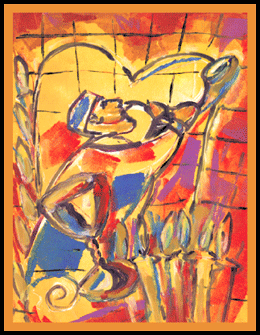 I did not much care for a piney,
resinous,
vegetal syrah, which was Herzog Special Reserve Syrah 2002 ($35) from
I did not much care for a piney,
resinous,
vegetal syrah, which was Herzog Special Reserve Syrah 2002 ($35) from Next up were three cabernet sauvignons. The first, Covenant’s 2003 ($95), was boldly Californian, tannic, with good vegetal flavors along with spices like cinnamon and red currant fruits, which gave it just a faint underpinning of sweetness to balanced the tannins. There was also a pleasant, well-structured layering of minerals and vegetal flavors in the Herzog Special Edition Warnecke Vineyard Cabernet Sauvignon ($60).
I was really impressed with the next wine, a cabernet that had all the marvelous virtues of a classy
Label of Covenant Wines Cabernet Sauvignon
My biggest surprise of the tasting was a wine I ranked with the best Sauternes I’ve ever had, with all the elements of rich viscosity and sweetness buoyed by an acid-and-mineral backbone that keeps it from being cloying. The full flavor of Semillon came through in the first whiff and down to the last sip on the back of the palate. It turned out to be
Such a tasting blew away any preconceptions I may have had for kosher wines, so that if I were to be invited to a seder this Passover, I know exactly the kinds of wines I would bring gladden the heart of my friends. And I would share in the last blessing of Passover, which goes, “Blessed are You, Lord Our God, king of the universe, who creates the fruit of the vine.”
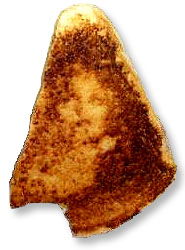 The
nation’s top competitive eaters gathered
in
The
nation’s top competitive eaters gathered
in IN CERTAIN BARS IN NEW YORK THAT MIGHT GET YOU ISAAC MIZRAHI'S PHONE NUMBER

"I adore manzanilla, the slightly salty and bone-dry fino sherry from Sanlúcar de Barrameda, a satellite of Jerez. I love it so much that my first act, on my latest visit to Spain, was to order, in a carefully rehearsed phonetic phrase, `manthaneea, por fabore'. I got a cup of chamomille tea."--Tom Doorley in a review of Havana Restaurant in Dublin in The Irish Times Magazine (Feb. 9. 2006).
"THE SWEET LIFE" CRUISE
 cooking demos by John and Galina Mariani
co-authors of The Italian-American
Cookbook), optional shore excursions will include a
tour of the Amalfi Coast,
dinner at the great Don Alfonso 1890 (2 Michelin stars), a private tour
of the Vatican, dinner at La Pergola (3 Michelin stars) in Rome, a
Night Cruise to Hotel de Paris and dinner at Louis XV (3 Michelin
stars)
in Monaco, and much more. Rates (a 20% savings) range from $4,411
to
$5,771. For complete information click.
cooking demos by John and Galina Mariani
co-authors of The Italian-American
Cookbook), optional shore excursions will include a
tour of the Amalfi Coast,
dinner at the great Don Alfonso 1890 (2 Michelin stars), a private tour
of the Vatican, dinner at La Pergola (3 Michelin stars) in Rome, a
Night Cruise to Hotel de Paris and dinner at Louis XV (3 Michelin
stars)
in Monaco, and much more. Rates (a 20% savings) range from $4,411
to
$5,771. For complete information click.QUICK BYTES
To all media publicity agents: Owing to the large volume of announcements received regarding holiday events, I will only have room in this newsletter for those that have a unique distinction to them. It would be impossible to list all Passover and Easter dinners unless they are part of a larger, more extensive format.--John Mariani
* On April 22 Turning Stone Resort and Casino will hold “The Taste of Turning Stone” featuring 8 cooking demos, 15 food booths, ice carvings, and the art of vegetable garnish. Music will be provided by Rick Montalbano and friends. Admission to the all-day event is free. Guests can purchase tickets to sample food. Visit http://www.turning-stone.com
* April 24-28 will be Monégasque Culinary Week in NYC, offering special prix fixe Mediterranean- and Monégasque-inspired lunch menus highlighting the flavors of the Principality at the following restaurants: Alto, Arabelle,
* On
April 27 Palisade Conference Center in
Palisades NY debuts its new series of 4-course wine tasting dinners
with “April
in
MARIANI'S VIRTUAL GOURMET NEWSLETTER is published weekly. Editor/Publisher:
John Mariani. Contributing Writers: Robert Mariani, Naomi
Kooker, Kirsten Skogerson, Edward Brivio, Mort
Hochstein, Suzanne Wright. Contributing
Photographers: Galina Stepanoff-Dargery, Bobby Pirillo. Technical
Advisor: Gerry McLoughlin.
Any of John Mariani's books below
may be ordered by clicking on the cover image.
 |
 |
 |
 |
 |
 |
copyright John Mariani 2006